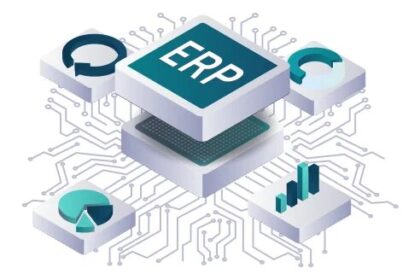In today’s fast-evolving cyber threat landscape, Security Operations Centers (SOCs) serve as the nerve center of an organization’s defense strategy. SOC teams are responsible for continuously monitoring, detecting, analyzing, and responding to potential security incidents. However, with the rapid increase in attack volume, alert fatigue, and the complexity of hybrid IT environments, many SOCs struggle to keep up.
This is where Threat Detection and Response (TDR) platforms come into play. TDR strengthens SOC operations by unifying visibility across the network, endpoints, and users — helping teams detect threats faster, respond more efficiently, and operate with greater intelligence.
Understanding Threat Detection and Response (TDR)
Threat Detection and Response (TDR) is a comprehensive cybersecurity approach that integrates multiple detection and response capabilities — such as Network Detection and Response (NDR), Endpoint Detection and Response (EDR), and User Behavior Analytics (UBA) — into one cohesive framework.
The goal of TDR is to eliminate silos between security tools, correlate data across multiple domains, and deliver actionable insights that enable faster and more effective incident response.
By combining visibility, analytics, and automation, TDR helps SOCs transition from reactive monitoring to proactive defense.
- Unified Visibility Across the Threat Landscape
One of the biggest challenges SOCs face is fragmented visibility. Traditional tools often operate in isolation — monitoring only one part of the environment, such as endpoints or network traffic. This siloed approach creates blind spots that attackers can exploit.
TDR platforms address this by integrating telemetry from multiple sources: endpoints, servers, cloud services, and network layers.
This unified visibility allows analysts to see the full attack chain — from initial intrusion to lateral movement and data exfiltration — all within a single dashboard. As a result, SOC teams gain a holistic view of threats, making detection and investigation far more efficient.
- Correlated Threat Intelligence and Contextual Insights
Raw alerts alone do not provide sufficient context for effective response. TDR enhances SOC operations by correlating alerts with threat intelligence, historical activity, and behavioral analytics to provide rich context around each event.
For example, if an endpoint executes a suspicious process, TDR can automatically check whether the file hash matches known malware, analyze associated network connections, and determine whether similar activity has occurred elsewhere in the organization.
This context-driven approach allows analysts to make quicker, more accurate decisions — reducing time wasted on investigating false positives.
- Enhanced Detection Through AI and Machine Learning
Modern TDR platforms leverage artificial intelligence (AI) and machine learning (ML) to identify subtle patterns and anomalies that might go unnoticed in traditional rule-based systems.
By continuously learning from historical data, these algorithms detect deviations from normal behavior — such as unusual login times, abnormal data transfers, or unauthorized access attempts.
This advanced analytics capability enables early detection of sophisticated attacks, including insider threats and zero-day exploits, strengthening the SOC’s ability to respond before significant damage occurs.
- Automation for Faster and Consistent Response
Speed is critical in cybersecurity. Manual response processes can delay containment and remediation, giving attackers more time to spread within a network.
TDR platforms integrate with Security Orchestration, Automation, and Response (SOAR) tools to automate repetitive and time-sensitive tasks. These may include isolating infected endpoints, blocking malicious IP addresses, or generating incident reports automatically.
This level of automation not only reduces Mean Time to Respond (MTTR) but also ensures consistent execution of security procedures — freeing analysts to focus on strategic threat hunting and root cause analysis.
- Reducing Alert Fatigue and Analyst Burnout
SOC analysts are often overwhelmed by the sheer number of alerts generated by disparate tools. TDR helps alleviate this by consolidating and correlating related alerts into single incidents.
Instead of investigating dozens of isolated alerts, analysts can view them as part of a larger, correlated attack narrative. This streamlined workflow reduces noise, prevents alert fatigue, and allows teams to prioritize high-risk incidents with clarity.
- Continuous Improvement Through Analytics and Reporting
TDR platforms provide detailed metrics and post-incident analysis that help SOCs measure performance and identify areas for improvement.
By tracking metrics such as Mean Time to Detect (MTTD), MTTR, and incident volume, SOC managers can refine workflows, optimize playbooks, and allocate resources more effectively.
This continuous feedback loop ensures that security operations evolve alongside changing threats.
- Stronger Collaboration Across Teams
TDR fosters collaboration by integrating detection, investigation, and response within a unified ecosystem. With shared dashboards, automated ticketing, and case management, SOC teams can work together seamlessly — from initial detection to final remediation.
This collaborative workflow eliminates information silos, improves communication, and ensures that all stakeholders stay aligned during critical incidents.
Conclusion
Threat Detection and Response (TDR) has become a cornerstone for modern SOC operations. By unifying visibility, enriching threat intelligence, and leveraging automation and machine learning, TDR enables security teams to work faster, smarter, and with greater precision.
In a world where attackers move at machine speed, organizations cannot rely solely on manual defense. TDR empowers SOCs to detect earlier, respond faster, and recover stronger, ultimately improving both security posture and operational efficiency.
Simply put, TDR transforms the SOC from a reactive defense center into a proactive, intelligent, and resilient cybersecurity command hub.

